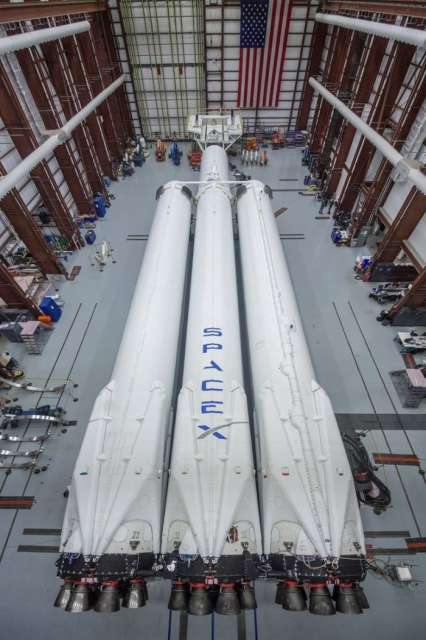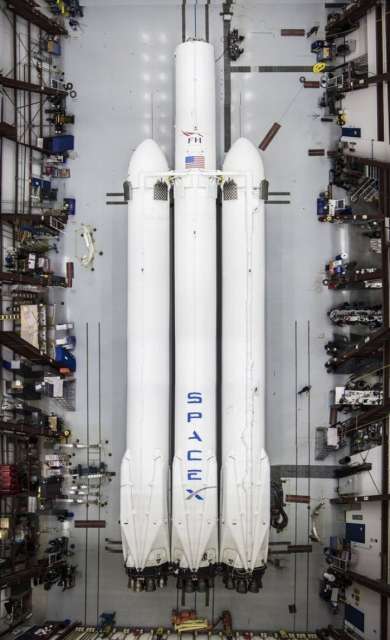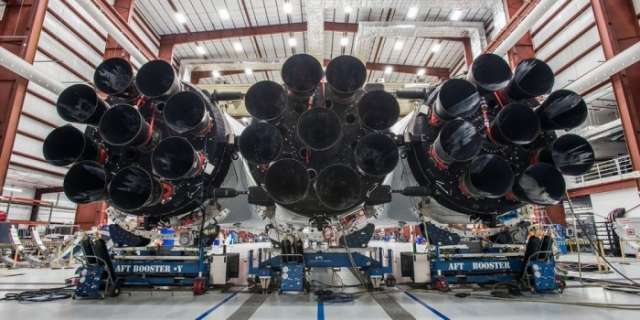
Falcon Heavy first stage at SpaceX facilities in Cape Canaveral.
Originally announced in 2011, the Falcon Heavy is finally almost ready to fly. The heavy-lift rocket will generate 5.1 million pounds of thrust at sea-level, which will make it the most powerful rocket in service. Elon Musk has cautioned, however, that the first flight of the Heavy comes with a number of risks, and that he would consider the first test launch a success if the vehicle just makes it far enough away from the pad to not cause any damage.
SpaceX could use the Falcon Heavy to launch payloads or even people beyond low-Earth orbit. The spaceflight company previously announced intentions to launch two paying customers on the Falcon Heavy to orbit the moon and then return to Earth. The large payload capacity of the Heavy, 140,660 lbs. to low-Earth orbit, could also have applications for government and national security launches in the future.

For the first launch, Elon Musk says he plans to send his Tesla Roadster to Mars orbit. Whether this plan is actually feasible, or legal, is yet to be seen.
If the Falcon Heavy does fly as intended, the true spectacle will come after launch, when all three rocket cores return to Earth for attempted vertical propulsive landings. The two side boosters, which are previously flown Falcon 9 first stages, will land on landing pads at Cape Canaveral, while the new primary center core will land on an autonomous drone ship in the Atlantic.
Whatever happens, we can't wait to see SpaceX light up that triple candle and let her rip.
More about: #Elon-Musk
















































